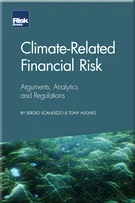Model Risk Governance and Management
An Operational Risk Paradigm Shift: Tracking the Velocity of Change
Cyber Security
Cyber Security and Technology Risk
Blockchain Technology: Emerging Opportunities and Risks
Big Data and Fintech Trends and Risks: A Critical Approach
Privacy Issues, Business Process Outsourcing and Cross-border Data Sharing
Managing Operational Risk in Data Frameworks
Pragmatic Operational Risk Management
Identification, Quantification and Monitoring of Operational Risk
Operational Risk Modelling is Dead, Long Live Operational Risk Modelling!
The “Whys” and “Hows” of Operational Risk Model Benchmarking
Model Risk Governance and Management
Best Practices in Operational Risk Management
Integrated Programmes for Operational Risk
Emerging Operational Risks: A Short Guide to Adjusting Your Risk Framework
Since the mid-1980s, quantitative risk models have become central to risk management, valuation, capital assessment and the regulatory oversight of financial institutions. At the same time, however, financial modelling techniques and frameworks are increasingly complex and opaque, with their foundations and nuances generally accessible only to professionals with advanced training in mathematics, statistics and quantitative finance.
Model complexity and opacity has led to lapses in the recognition and acceptance of model limitations by senior management and decision-makers. This leads to suboptimal and even irrational decisions and consequent operational risk. During market stress periods, this can exacerbate liquidity squeezes, cause fire sales, and even market contagion and unwarranted bankruptcies. This was witnessed almost universally at most large banks and other financial institutions during the financial crisis of 2008. In its aftermath, the ensuing postmortem and regulatory scrutiny have heightened the need for rigorous institutional frameworks for model management and governance that entail formal testing and validation of models.
This chapter will provide a broad
Copyright Infopro Digital Limited. All rights reserved.
As outlined in our terms and conditions, https://www.infopro-digital.com/terms-and-conditions/subscriptions/ (point 2.4), printing is limited to a single copy.
If you would like to purchase additional rights please email info@risk.net
Copyright Infopro Digital Limited. All rights reserved.
You may share this content using our article tools. As outlined in our terms and conditions, https://www.infopro-digital.com/terms-and-conditions/subscriptions/ (clause 2.4), an Authorised User may only make one copy of the materials for their own personal use. You must also comply with the restrictions in clause 2.5.
If you would like to purchase additional rights please email info@risk.net










